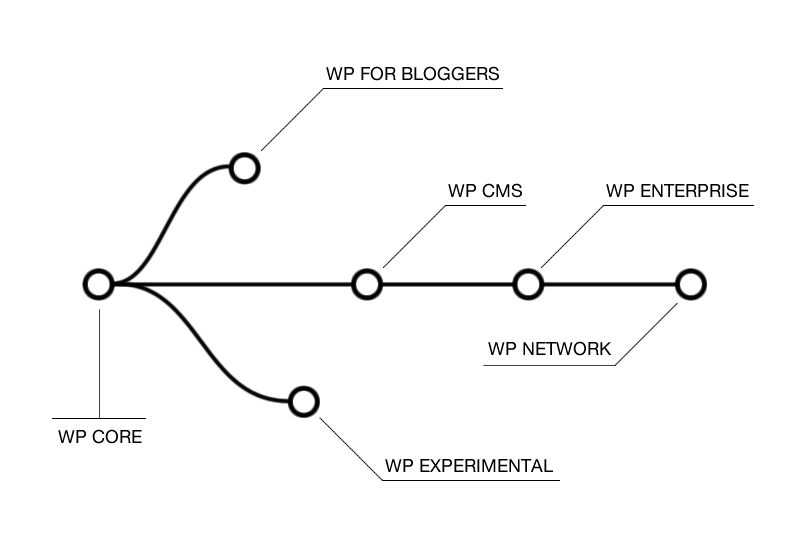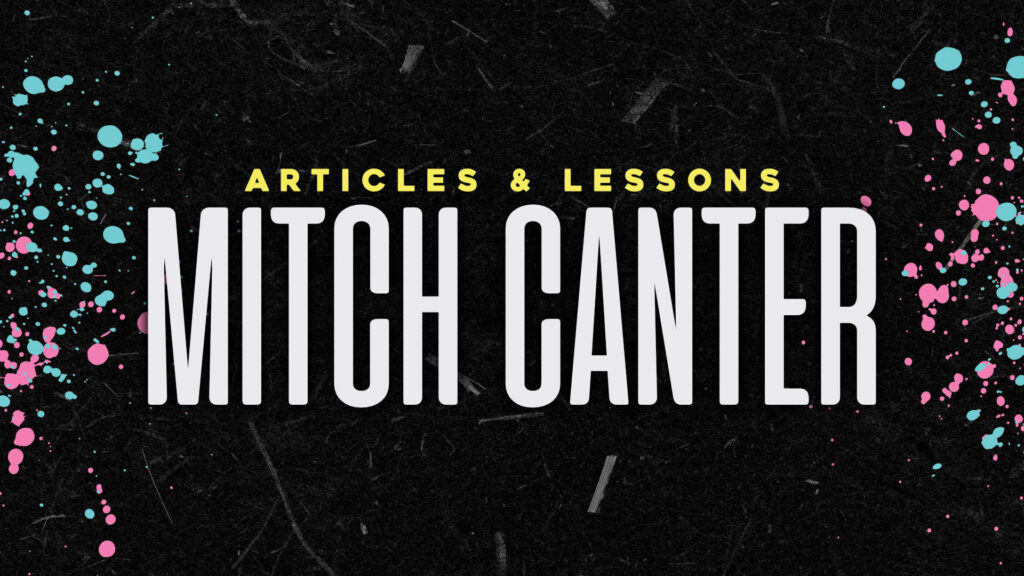If you’ve been following along in the WordPress space lately, you’ll know that there’s a lot of discussion around WordPress – not of code, nor of content, but of how the software itself is managed. To put it simply, there are three parties involved: Matt Mullenweg, who the founder of both the WordPress Foundation and Automattic. The WordPress Foundation is a non-profit entity, while Automattic handles commercial and for-profit interests.
I’m not going to re-hash or opine on what’s been already discussed; there are tons of people smarter than I who have made their facts, opinions, and everything else readily available on Social Media. It’s a good read, really; in order to understand exactly what’s going on, it’s worth sifting through some of the material out there.
This post is different, in that I want to look at something that’s definitively NOT WordPress, but something that we can glean a bit of knowledge and example from.
But, before we dive right in, I want to ask you:
What’s your favorite flavor of ice cream?
Choices, Choices, Choices.
If you’re confused, humor me for a bit. What’s your favorite flavor of ice cream, and – secondly – why do you like it so much? My favorite ice cream is, by far, Ben and Jerry’s Half Baked. Half chocolate ice cream, half vanilla; half cookie-dough bits, and half brownies. What’s not to love?
There are as many ice cream flavors as there are grains of sand on the beach. And with each flavor comes a new experience. Maybe you like ice cream with crunchy bits of cookie. Maybe you like the smooth chocolate flavor of a rich fudge ice cream. Or maybe you like plain ole’ vanilla ice cream.
If you are an Open Source fan, you may see where I’m going with this. In fact, when you use “Open Source” and “flavors” in the same sentence with someone who knows open source, there’s only one logical conclusion:
“Oh, like Linux!”
Linux, a (very) Brief History
The history of Linux is long, but very simple. Created in 1983, Richard Stallman created the GNU Project to create a Unix-like operating system. In 1991, Linus Torvalds developed the first true Linux kernel (the interface between hardware and software). But here’s where things get interesting.
In the mid-90s – shortly after the release of the Linux kernel – users started to find that the installation process of Linux was complicated. So, different distributions (distros, or even flavors) of Linux started to pop up across the web.
Anyone with the time and know-how could make Linux into what they wanted it to be.
Why Different Distros of Linux Exist
Today, the main reasons Linux has different distros can be summed up in a few key points:
- Core Values: Debian is a distro that uses only free and open source software. While other distros may package in obfuscated or commercially licensed code, Debian wants the operating system to be completely Free and Open Source
- GUI: KDE and Gnome are two varieties of GUIs that ship with Linux distros, and some will even allow you to pick and choose which GUI you wish to use.
- Purpose: Ubuntu is a beginner friendly distro. BackBox is a security-focused distro for penetration tests and security assessments. ElementaryOS is meant to mimic modern operating systems in use and ‘polish’. There’s a different distro of Linux to suit any and every potential need.
- Package Management: Did you know that different distros can get software from different repositories? Debian use the apt system to install packages and dependencies, while Arch Linux has its own manager and repository – the Arch User Repository.
In short, for whatever thing you want to change about Linux, there either exists a Linux Distro already, or the potential to create one is within anyone’s grasp – with the right know-how and time.
WordPress Distros, a Thought Experiment
You can probably see where the rest of this article is going. I wanted to provoke a thought experiment: could WordPress exist in a state similar to Linux, with various versions, package repositories, and setups that are tailored to the user’s needs or requests.
Funny enough, I’m not the first person to think of this.

Mor10, an infinitely smarter guy than I am, actually wrote about this subject for the first time in 2013. In the article, he suggests the very thing I’ve mentioned earlier – that WordPress, then 10 years old, could be rethought into a structure that is modularization to meet the different demands of different users.
Boy howdy did he catch some flack for this article.
The Benefits of a Decentralized Distro Network
So, why would we want to take a monolith like WordPress and break it down into further distributions?
- Customization. WordPress currently has a ‘one-stop’ model. When you install WordPress, you install the same version of WordPress no matter what your end goal is. eCommerce? Learning Management System? Block? The start is still the same. What if there was a way to package together all of the best customization options, plugins, and best practices into a single installation that could jump-start someone’s use of WordPress?
- Community-Driven Development: A decentralized model means that people could work more freely on features that benefit their use-case, and even group together into communities to support development. A WordPress distro used for education has different needs than one used for commercial use. It makes sense, then, that people could adapt, improve, and publish features and fixes that benefit their niche.
- Package Management: There is currently one source of truth for WordPress plugins. Long thought to be a positive, recent events have shown that this can be a potential bottle-neck for innocent users. By having multiple package repositories, and even a method to check packages/plugins for bad actions or actors, this could not only decentralize the cost and logistics of running the repository, but also allow users to connect to only repositories that contain plugins they need, eliminating bloat and confusion when selecting a plugin.
- Complexity: A user that needs a simple blog may not need all the bells and whistles that an enterprise user would need. Distros would allow tailor-made versions of WordPress to be offered to users based on their skill or experience level.
- Innovation: What if, during the Gutenberg initial release, we had a distro of WordPress that contained all of the bleeding edge features that people could tap into, use, and upgrade – without the forced adoption of all users? (note: I know the Classic Editor plugin exists… this is just a thought experiment, remember?)
- A True Community Ownership. De-centralizing WordPress, and its various flavors, dilutes the influence and ownership a single individual has, and instead places that power in the hands of the users and community.
Challenges of Decentralization
I’m not going to be disingenuous and say that a decentralized WordPress wouldn’t be without its set of problems. There would be challenges to overcome:
- Rapidness of Fixes: with a decentralized approach, anything that would benefit the software as a whole would have to be agreed upon and implemented by every single faction and distro-maintaining group. This leads to a lot of red tape and bureaucracy, which slows down feature development and growth without the proper checks and balances in place.
- Compatibility & Fragmentation: What I’ve mentioned above as a positive could also very easily be a negative as well. Consistency with theme, plugin, and user experience could be different depending on which version of WordPress you go with.
- Developer Overhead: Developers would have to do extra work to ensure that plugins and themes worked within the various ecosystems created by a decentralized approach.
- Resourcing: Taking resources into a single distro would take them away from the project as a whole.
Addressing these changes would require planning, communication, and – the overall point of the exercise – governance. It would require a group of people with a mind for the community and the software as a whole to work to ensure that the distributions were compatible, but yet still had the personality and flavor of the groups that represented them.
So, What’s the Best Move?
No idea. While a transition to a decentralized distro model presents challenges, it also offers a lot of possibility for innovation and specialization in the WordPress ecosystem. With thoughtful planning, and a lot of collaboration from the community, WordPress has the potential to grow, thrive, and continue to be the dominant overall CMS in today’s digital landscape – no matter which flavor you choose.


